As people age, their risk of experiencing a fall increases. Whether it’s a rushed attempt to get to the bathroom, a sudden drop in blood pressure, age-related muscle loss, or a medical condition like heart disease, there’s a one-in-four chance a person over the age of 65 is going to experience a fall. (1) This increased risk can cause people to become more sedentary or lose confidence in their ability to remain active—especially if they have experienced at least one fall already. (2) Plus, the concern that a fall will occur can take a toll on loved ones, too.
“The fear of falling for older adults, whether based on a previous fall or anticipation of one, can lead to less physical activity and social withdrawal,” writes Dr. Raj Dasgupta, MD, FACP, FCCP, FAASM. “This not only impacts their physical health but also takes a toll on their mental well-being, social interactions and quality of life. Caregivers and loved ones can also experience a constant state of heightened stress and worry, as they consider the potential of falls and the challenges of giving support and care.”
For this reason, many people are turning to medical alert systems, like watches, to promote independence and allow people to age in place—especially since research has shown that people feel more confident and secure when wearing a medical alert device. (3) They also can provide loved ones peace of mind and important information when an accident occurs.
“Some people might prefer a watch over a medical alert pendant simply because it looks nicer and feels more natural to wear. You also don’t have to worry about remembering to put on or take off a separate pendant, as it’s just there when you need it.”
Dr. Raj Dasgupta, MD, FACP, FCCP, FAASM, Fortune Recommends Medical Advisor
To help you choose the best medical alert watch for you or your loved one, we spent hours evaluating 32 makes and models with varying levels of functionality. As we conducted our testing, we prioritized responsiveness and reliability. We tested the watches to see how fast they connected to the call center and how well they detected various types of falls. We evaluated the watches based on ease of use, accessibility, customer experience, and value. Below is an overview of the best medical alert watches on our list.
Editor’s pick
The Bay Alarm Medical SOS Smartwatch is our top pick for the best medical alert watch thanks to its unlimited range and affordable pricing. The watch features an intuitive touchscreen and a detailed weather map for extensive insights. It’s ideal for individuals who want a solid quality watch with good monitoring services.
Our picks for the best medical alert watches
- Best for the price: Bay Alarm Medical SOS Smartwatch
- Best with fall detection: Unaliwear Kanega Watch
- Best for premium features: Medical Guardian MGMove
- Best for active users: LifeFone At-Home & On-the-Go Safe Watch Active
Compare medical alert watches
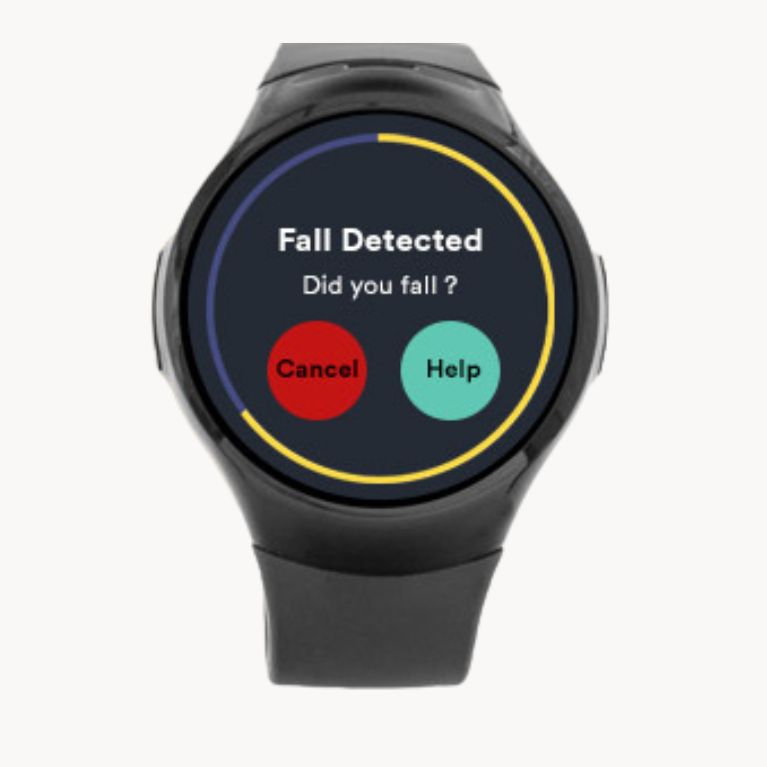
|
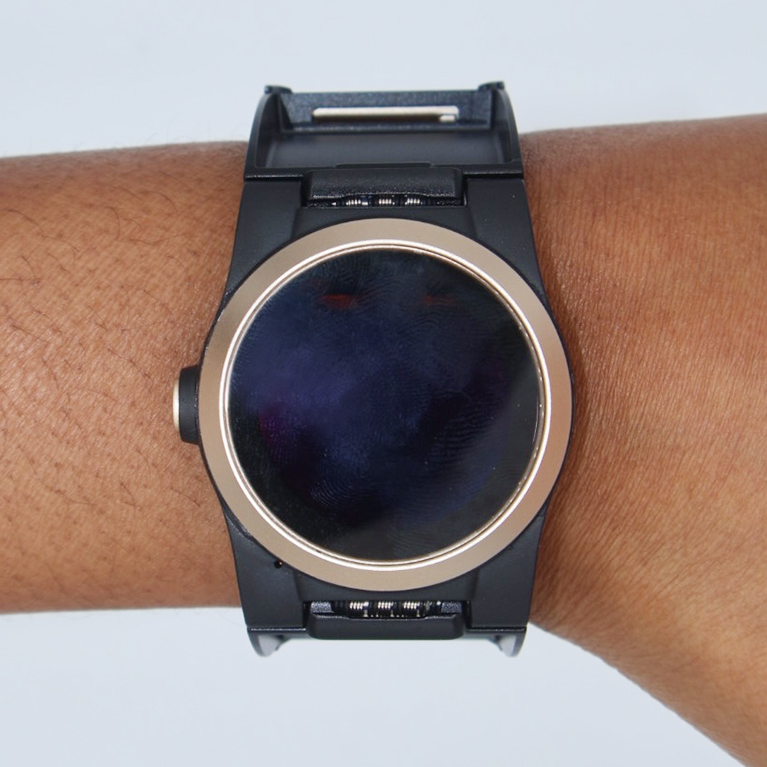
|
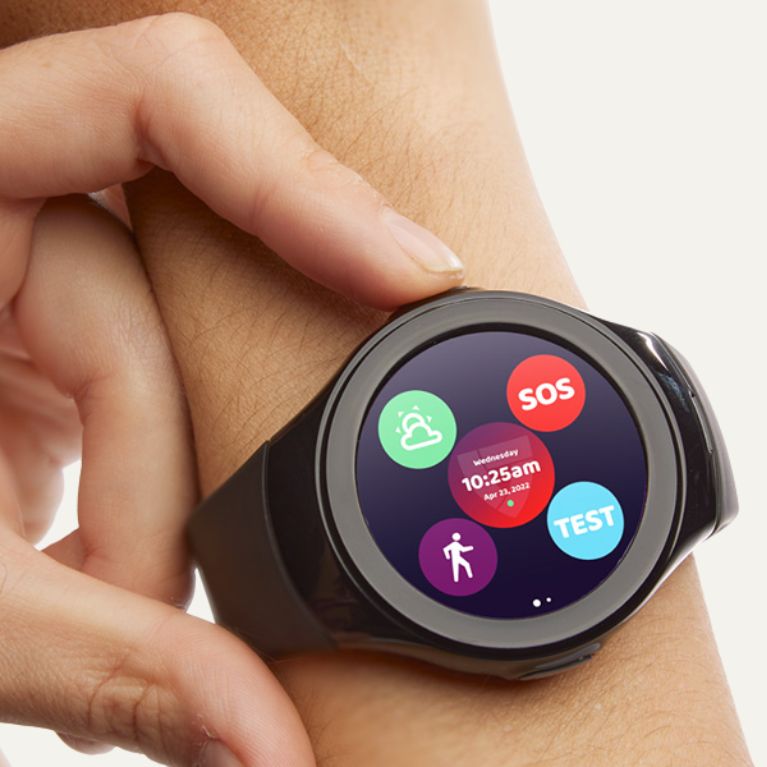
|
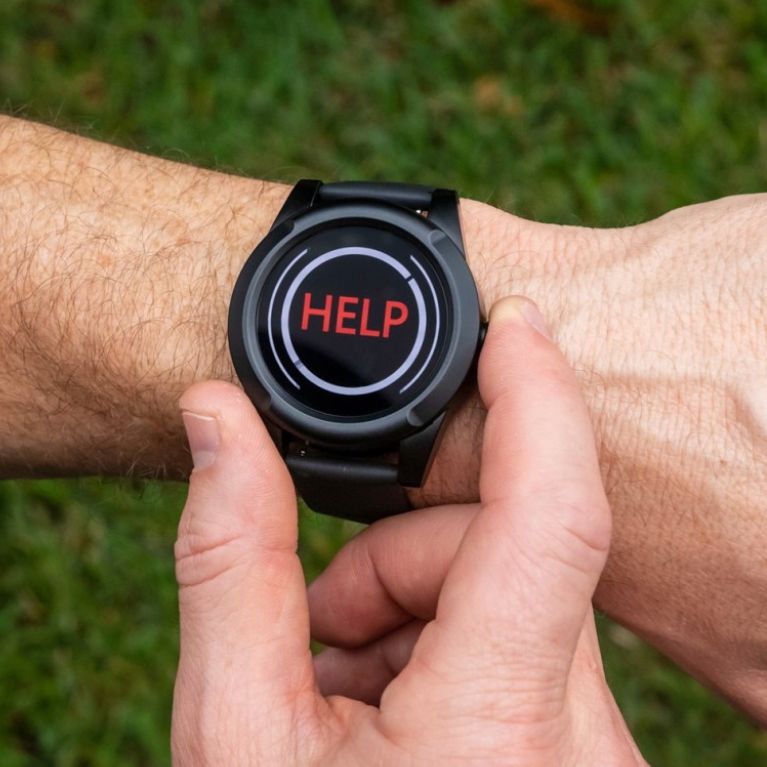
|
|
| Bay Alarm Medical SOS Smartwatch | Unaliwear Kanega Watch | Medical Guardian MGMove | LifeFone At-Home & On-the-Go Safe Watch Active | |
| Rating | ||||
| Price | $159 (plus monitoring fee) | $299 (plus monitoring fee) | $199.95 (plus monitoring fee) | Fee for monitoring only |
| Range | Unlimited | Unlimited | Unlimited | Unlimited |
| Battery life | 6-12 hours | 24-36 hours | 24 hours | 24 hours |
| Fall detection | Yes ($10/month) | Yes | Yes ($10/month) | Yes ($5/month) |
Best medical alert watch for the price: Bay Alarm Medical SOS Smartwatch
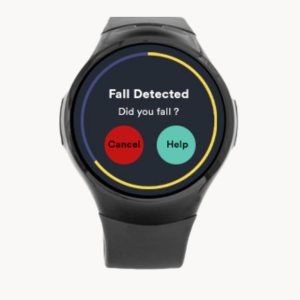

Key product features
What you should know
The Bay Alarm Medical SOS Smartwatch is not only priced at an accessible price point but also a quality product that functions like other similar medical alert watches. Equipped with all the features one would expect, like an SOS button, responsive call center, GPS tracking, and more, you cannot find another watch at this price point that functions as well as this one.
- This watch is also lightweight and more streamlined than other similar medical alert watches, which makes wearing it consistently more likely to occur than wearing a heavier or bulkier watch.
- While this watch is $40 to $50 less than similar medical alert watches, it still requires a monitoring fee on par with other watches in its category.
- This watch is a great entry-level watch, especially since it’s so simple to use. It’s well-suited for people who are unsure whether they’ll like this type of technology.
- Access to the call center is quick and easy, though the audio quality may be more challenging for those with hearing impairments.
Why we like Bay Alarm Medical SOS Smartwatch as best for the price
When it comes to medical alert watches, the price can sometimes limit a person’s access, especially because these devices do not meet Medicare’s definition of durable medical equipment and, therefore, would not be covered. (4) For this reason, we especially appreciate the Bay Alarm Medical SOS Smartwatch as the best for the price. The watch is about $40 to $50 cheaper than other similar medical alert watches, but it’s also a solid quality watch with good monitoring services.
We also appreciate the voice prompts related to the charging capabilities and love that this watch seems lighter and less bulky than other models we tested. Plus, the touchscreen is intuitive, and the detailed weather map mimics what you would see on your smartphone.
But more importantly, the connection time to the call center was good, rivaling that of other, more expensive watches. In fact, during one of the tests, we were connected to the call center in under a minute (53 seconds), providing a sense of safety and security that help would be available almost immediately when needed.
This watch also includes monthly tests, so you can rest assured that even if you aren’t using the monitoring services, they’re still working and readily available when needed. You even have access to a log in the app with the agents assigned, the date and time of the test, the GPS location with coordinates, and the location on Google Maps.
There were a few disappointments when testing this medical alert watch. For instance, when we were connected to the call center, the audio was somewhat fuzzy or grainy. Of course, it’s possible this could be attributed to our Wi-Fi signal. Regardless, it’s something to consider, especially in areas with poor Wi-Fi accessibility.
The response was inconsistent when we tested the fall detection (which is available for an additional fee). In some cases, it didn’t register a fall, which could be more related to our test than a defect in the watch. But it’s something to be aware of if you’re considering this medical alert watch for yourself or a loved one. We also want to note that medical alert watches won’t be as accurate or reliable as typical medical alert devices, so this is a common issue amongst them.
Check out our Bay Alarm Medical review for more information.
What customers are saying
Customers who purchased the Bay Alarm Medical SOS Smartwatch appreciate the sense of security it provides and the fact that everyone is professional, patient, and helpful when they do have to communicate with people at the call center.
In fact, Trustpilot verified reviewer Karin says they purchased this medical alert watch and added fall protection for her 92-year-old father.
“It’s so simple to use; he has no problem. He keeps the charger [on his] bedside, so the device is within reach all night and fully charged all day. Also, Bay Alarm Medical responds immediately when he tests his device—[so] comforting.”
Karin, Trustpilot Verified Reviewer
Meanwhile, Cara, another Trustpilot verified reviewer, says the customer service, sales, and technical support staff are excellent. “Everyone explains things clearly, and they took time with me during each encounter.”
But Colleen, a Trustpilot verified reviewer, has had a different experience. “This company is very nice when you sign up, but the actual experience is chaotic and impersonal,” she says. “[The] first problem was on us, as my mom cannot understand the speaker’s voice, and for those with hearing aids, the problem is the low quality of the speaker’s sound. She had fallen, so this [made] her pretty stressed.”
Colleen also indicated receiving multiple calls in a row after each fall. This rapid-fire calling made her feel like the company was staffed by robots or artificial intelligence rather than live people ready and willing to help.
Specs
| Battery life | 6-12 hours |
| Fall detection | Yes ($10 month) |
| Warranty | Extra to purchase |
| Starting monthly cost | $34.95 (base price) |
| Water resistance | Yes |
Best medical alert watch with fall protection: Unaliwear Kanega Watch
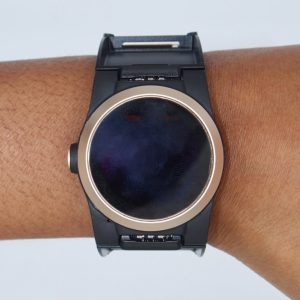

Key product features
What you should know
The Unaliwear Kanega Watch is a top-notch medical alert watch that offers fall protection as part of its all-inclusive monitoring fee—unlike other devices where the service must be added. Plus, the device is sensitive enough to distinguish between true falls and false alarms and has a quick response from the call center.
- The onboarding process is simple and easy to complete, and the company’s representatives are helpful, informative, and patient.
- While this watch’s monthly monitoring fee is higher than some others, it’s an all-inclusive fee, meaning everything the watch can do is provided at one cost—unlike other watches, which require additional features like fall detection.
- This watch is ideal for people who need around-the-clock monitoring due to its unique dual battery system, which ensures one of its four included lithium batteries is charged and ready to go at all times.
- This medical alert watch offers three ways to get help: fall detection, button push, and voice activation.
Why we like Unaliwear Kanega Watch as best with fall protection
The risk of falling increases with age—despite efforts to stay active and eat nutritiously. In fact, each year, 3 million older people are treated for fall injuries, and more than 800,000 are hospitalized. (5) For this reason, an elderly monitoring system is a wise investment, especially for the elderly—and those with an increased fall risk due to a medical condition like multiple sclerosis or vertigo. The Unaliwear Kanega Watch stood out as the best option for fall detection during our testing process.
“Falls are a big deal for older people because they can cause serious injuries like broken bones or head injuries. Some medical conditions or medications can make falls more likely, so it’s important to stay on top of managing any underlying health issues and keep active.”
Dr. Raj Dasgupta, MD, FACP, FCCP, FAASM, Fortune Recommends Medical Advisor
Not only did this watch excel during our simulated falls compared to other medical alert watches we tested, but fall detection is included in the all-inclusive price. This is a plus because you don’t have to remember to add it later—it will be there and ready to use when needed. That said, Unaliwear’s monthly monitoring fee is slightly higher than the base prices of the other watches we tested. Still, once you add fall protection and other key features that are already included on this medical alert watch, the prices are pretty comparable.
The onboarding process also is simple and easy to complete—especially with the help of a company representative. We also found our operator friendly and helpful. Once set up, the watch performs as expected, and the call center is responsive. Our tests found the watch took a little over a minute to connect to the call center during a call, which is slightly longer than the other watches on this list but still impressive compared to other fall detection devices on the market.
We especially appreciated the voice prompts from the watch that indicated it was calling for help. We also liked that the watch vibrates right before you’re connected to the call center—a great feature to help alert the person in need or rouse them if they’re drifting off.
But perhaps the most impressive thing about this watch is that you never have to take it off to charge it. Instead, it comes equipped with a dual battery system—and four lithium batteries—so your watch is always ready to wear. This is a great feature, considering many falls happen at night when someone gets out of bed too quickly or trips over something in their path due to poor lighting. (6)
That said, we were disappointed that it was not immediately clear how to adjust the wristband or the volume. Upon further investigation, we found that you have to call the company to have the volume changed remotely, which is frustrating for anyone who needs a volume issue addressed immediately. As for wristband adjustment, we discovered you have to unhook the wristband to change the circumference, which can be cumbersome for someone who struggles with fine motor skills.
We also found the watch to be a little bulky, with a watch face that seemed oversized for the provided wristband. The weight of this device can make it a challenge to put on each day without some assistance. Finally, due to its size, writing can also be challenging while wearing the watch, so we recommend not wearing it on your dominant hand.
View our Unaliwear review for more information.
What customers are saying
Customer reviews for this watch have been mostly positive. The majority of people comment on how well their experiences with the call center have gone. They also appreciate the fact that this watch has a dual battery system, which means it never has to come off to be charged.
According to Annie, a Trustpilot verified reviewer, this watch is easy to use with very little setup. She also likes that it’s water resistant and can be worn in the shower, and the dual battery system keeps it charged and ready to go at all times.
“It’s discreet and looks just like a regular watch,” she says. We’ve had great experiences with customer service and the test calls we’ve made. The company representatives have gone above and beyond to help and answer all our questions. We’re very happy with this product and so glad it exists.”
Meanwhile, verified Trustpilot reviewer Cynthia indicates that she is 80 years old and has no interest in wearing a pendant nor needs all the bells and whistles of an Apple Watch. Instead, the Unaliwear Kanega watch is the perfect solution for her needs.
“I can wear it everywhere, all the time, and feel protected and safe, even in the shower. I’ve only fallen once, and it worked. I didn’t need help from the agent who spoke to me through my watch, but it was a great test.”
Cynthia, Verified Trustpilot Reviewer
She also says she has called through the watch to get help from a neighbor and found it useful. “So happy I have this watch. Highly recommend it.”
Likewise, verified Trustpilot reviewer Richard S. says he purchased the watch because he didn’t want to wear something around his neck but knew he needed additional protection from falls. “It works as advertised. I have fallen several times, and the watch has detected the fall and connected me directly with a rep, who contacted EMS when I needed them to.” He also appreciates that he never has to take the watch off and notes that the batteries have been easily changed when needed.
However, a verified Trustpilot reviewer named DT has had some challenges with customer service and the company’s warranty program. He indicated that he returned the watch in perfect condition but was charged for a broken watch. He doesn’t indicate if the company corrected this situation.
Specs
| Battery life | 24-36 hours |
| Fall detection | Yes |
| Warranty | Lifetime |
| Starting monthly cost | $79.95 (all inclusive) |
| Water resistance | Yes |
Best medical alert watch for premium features: Medical Guardian MGMove
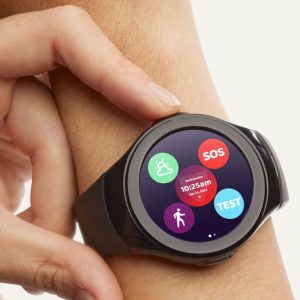

Key product features
What you should know
Medical Guardian’s MGMove Smartwatch has technological features that differentiate it from more basic medical alert watches. It provides monitoring, call center access, monthly testing, and SOS calling capabilities, as well as activity tracking and a weather app.
- The response time in an emergency is quick—in one test, it only took 35 seconds for the call center to be on the line and ready to help our tester.
- The monthly monitoring for this medical alert watch is at an accessible price point of $39.95, with the option to add additional services like fall detection ($10) and a social app ($5).
- This watch is ideal for those who are active, appreciate technological features, and want to maintain their independence while having quick access to help if it’s ever needed.
- The MGMove also includes an easy set-up process, offers an intuitive interface, and features voice prompts when charging.
Why we like Medical Guardian MGMove as best for premium features
Most older people—and people with conditions that put them at risk for a medical emergency—want a tool that fosters independence and gives them the confidence they need to engage in their daily activities without fear of being hurt and unable to get help. (3) That’s why we appreciate the Medical Guardian MGMove medical alert watch—it fulfills those needs and then some.
In our testing, we found that we were connected to the call center in less than one minute, with one simulated emergency only taking 35 seconds to get us on the line with someone who could help. This quick response time provides peace of mind that if an accident does happen, help will be available in a matter of seconds.
We also appreciate the ease and intuitiveness of the set-up process, as well as the voice prompts that let you know when the device is charging and when it’s done. This feature helps reduce the risk of putting the watch on the charger only to find in the morning it wasn’t fully connected, and the battery is dead.
The MGMove watch also includes monitoring, SOS calls, call center services, monthly tests, activity tracking, real-time weather information, and data access for loved ones and caregivers for $39.95 per month. Fall detection costs an additional $10 per month, and the Social Circles App, which enables a chat feature and medication reminders, costs an additional $5 per month.
The only downside to this feature-laden watch is that fall detection is not included. Plus, when we tested it, its fall detection capabilities were inconsistent and didn’t function as expected. Of course, some of this inconsistency could’ve been related to the fact that we were testing the watch with a simulated fall rather than an actual fall. Additionally, medical alert watches won’t be as accurate or reliable as other devices, such as medical alert necklaces.
We also noticed that when pressing the SOS button on the watch, the device can sometimes think that you’re trying to swipe to the next screen. Instead, a single light tap on the button is all that is needed to connect to the call center for help. Other than that, this medical alert watch is a great option for those who appreciate technological features and want the freedom and security to know that help is just a few seconds away when needed.
To learn more about this brand, visit our full Medical Guardian review.
What customers are saying
Most reviewers find that the MGMove watch is a reliable resource that’s easy to use. Not only do they say that connecting with the call center is simple, but they also appreciate the sense of security it provides.
For instance, Phillip, an Amazon verified reviewer, says that this watch is perfect for older people or those with severe medical issues requiring monitoring in an emergency. “It also has great battery life,” he adds. “The screen is bright and easy to read in all lighting conditions.”
Likewise, verified Amazon reviewer Amanda M. appreciates that the watch is water resistant and durable, making it a reliable resource in any situation, including while taking a shower or walking in the rain.
“It’s [also] lightweight and comfortable to wear, so my loved ones can have it on all day without discomfort. The wearable medical alert feature is a lifeline in emergencies, and I appreciate the sense of security it provides.”
Amanda M., Amazon Reviewer
However, as with any piece of technology, some glitches sometimes occur. According to Ed S., a verified Amazon reviewer, the watch belonging to their elderly neighbor wasn’t holding a charge and was sending alerts when nothing was wrong. This was particularly stressful for all involved as they would rush in to ensure their neighbor was alright.
Specs
| Battery life | 24 hours |
| Fall detection | Yes ($10 per month) |
| Warranty | One year (when purchased from the company) |
| Starting monthly cost | $39.95 (base price) |
| Water resistance | Yes |
Best medical alert watch for active users: LifeFone At-Home & On-the-Go Safe Watch Active
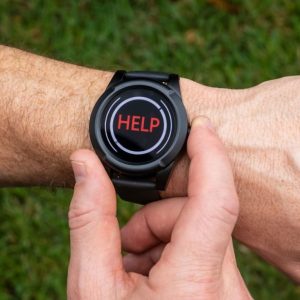

Key product features
What you should know
LifeFone At-Home & On-the-Go Safe Watch is a great option for people who are active and on the go but still need a reliable monitoring system in case an accident happens. This medical alert watch has quick response times when an accident or fall occurs and an option to cancel the request in case of a false alarm. This is a great feature for active individuals who may bump the watch or participate in activities that can be mistaken for falls or accidents.
- Our testing also revealed that this watch is intuitive, easy to use, and not as overwhelming as other smartwatches.
- The price of this watch is in line with other similar medical alert watches and fall detection can be added for only $5 more per month.
- The LifeFone At-Home & On-the-Go Safe Watch resembles an actual watch, so it pairs nicely with clothing and other accessories without looking like a medical device.
- This watch offers health metrics like step counts, calories burned, and heart rate so people can better understand factors that influence their overall well-being.
Why we like LifeFone At-Home & On-the-Go Safe Watch Active as best for active users
Despite being active and independent, it’s still a good idea to use a medical alert device as you age simply because, occasionally, feeling unsure on your feet can impede your activity level and unintentionally lead to more sedentary behavior. In fact, research indicates that most people who wear some sort of device—whether a pendant, watch, or something else–report feeling safer and more confident going about their daily activities. (7)
Consequently, we found the LifeFone At-Home & On-the-Go Safe Watch Active ideal for people who want to stay active and safe. The watch’s face is bright and easy to read, even when doing something else. It also shows your heart rate upon request. This great feature helps you keep track of key metrics related to your health and well-being.
We also appreciate that this watch tracks your steps automatically throughout the day—this can be a helpful reminder when you’re more inactive and need to get moving. (8) You also can see how many calories you burned compared to the steps you have taken, and there’s even a weather feature so that you’re always prepared for changes as you go about your day.
Plus, at first glance, this device looks just like a regular watch, which can be great for those who prefer a discreet medical alert device. There’s even a feature to find the watch if it has been misplaced.
During our testing, we discovered we could connect to a call center in as quickly as 35 seconds. And there’s an option to cancel the request if you accidentally push the button. This feature keeps false alarms to a minimum and prevents unnecessary notifications to family members who might unnecessarily worry.
That said, we found the watch’s face to be a bit bulky and were later told by a customer service representative that it is not ideal for people with small wrists. We also noticed that the GPS service was spotty and that our customer service experiences were inconsistent.
To learn more, visit our full LifeFone review.
What customers are saying
People who have purchased the LifeFone At-Home & On-the-Go Safe Watch Active like the call center and emergency response features this device provides. Responses are quick, thorough, and efficient, getting people the help they need promptly.
Trustpilot verified reviewer Elizabeth T. says LifeFone also does a great job keeping family members informed. During an emergency with her grandmother, she didn’t have to worry about contacting family members because they were notified when the button was pushed.
“It was also great that they were able to call the ambulance while I kept my grandmother calm and gathered the necessary things for a trip to the hospital.”
Elizabeth T., Trustpilot Verified Reviewer
Meanwhile, Pat U., a verified Trustpilot reviewer, likes that LifeFone monitors their connection. “Recently, they called to tell me they were not receiving input from my [device]. I had not been aware of that…If I had needed help, I would not have been able to contact them. LifeFone makes me feel comfortable and free to not worry much about falling or any other similar problem.”
However, not everyone has had a good experience with their service. For instance, a verified Trustpilot reviewer notes that his mother’s monitoring service was not working for 18 months but that the company did not offer to reimburse him for services that were not received.
Specs
| Battery life | 24 hours |
| Fall detection | Yes, $5/month |
| Warranty | 30-day money-back guarantee (the watch is a rental) |
| Starting monthly cost | $47.95 |
| Water resistance | Yes |
How we test medical alert watches
Medical alert watches provide confidence, well-being, and independence to their wearers. We aim to help readers choose the best medical alert watch for their needs. We achieve this through thorough, firsthand testing and evaluation. Read our full medical alert system testing methodology for more information on our testing process.
Testing criteria
Reliability and response—40%
A watch’s reliability in emergencies is its most important function. We test how quickly the watch responds, how long its battery lasts, and how far its signal ranges.
- Response time
- Signal range
- Battery life
- Water resistance
- Fall detection
Ease of use and accessibility—30%
A medical alert watch is only useful if it’s also simple to learn and operate. We evaluate the following features to determine the user’s watch experience.
- Wearability
- Voice clarity and volume
- Setup and use
- Accessibility features
Value—20%
Value isn’t just the sticker price but also includes factors like maintenance costs, insurance, add-on features, and more.
- Initial cost vs. ongoing fees
- Contract flexibility
- Included features vs. add-ons
- Insurance
Customer experience—10%
Quick, helpful customer service and a streamlined purchasing process can significantly improve the user’s experience with their medical alert watch.
- Shipping
- Warranty
- Customer support
How to choose the best medical alert watch for you
Choosing a medical alert watch is a highly individualized decision that will be influenced by your needs and preferences. Start by thinking about your biggest needs (or risks) and then consider which watches address those needs best. For instance, if falls are your biggest concern, you may want to find a watch that offers superior fall detection capabilities. Or, if quick response times are needed because of a medical condition, select a watch that has quick connection times to the call center and fast response times to get you the medical help you need.
Also, ensure the device fits your lifestyle and that wearing it will not disrupt you or put you at greater risk. For instance, looking down at a watch while walking can lead to a fall. Finally, consider the fees associated with the monitoring services and whether or not they provide good value and fit into your budget. And, if you are still not sure which one will be right for you, look for a product that will let you try it out risk-free.
Related: How do medical alert systems work?
Pros and cons of medical alert watches
Medical alert watches can be a beneficial service for older people and their families. Not only do they provide an extra layer of safety and security, but they also allow people to age in place and live more independent lives. They may also improve the wearer’s quality of life and give them more confidence to stay active. (3)
Meanwhile, they also can provide peace of mind for family members and caregivers, knowing that their loved one has access to a call center 24 hours a day, seven days a week, if they need medical attention, slip and fall, or experience another type of emergency. As a bonus, many watches are designed to use the company’s cellular plan and GPS services, so the person wearing the watch can access emergency assistance even when on the go. This is great for accidents and if the person gets confused or lost and needs assistance getting home.
“Medical alert watches can give loved ones peace of mind by providing older loved ones with continuous monitoring and quick access to help. If something goes wrong, like a fall, these watches can send alerts to caregivers, even if the wearer can’t call for help themselves. In other words, it can be seen as having a safety net that keeps everyone in the loop and reassures family members that their loved one is looked after, even when they’re not able to physically be there.”
Dr. Raj Dasgupta, MD, FACP, FCCP, FAASM, Fortune Recommends Medical Advisor
And while there are not many cons to a medical alert watch, these devices are not for everyone. For instance, they are not meant to substitute in-person support. They’re also not ideal for people who lack fine motor skills, have hearing impairments, or those who are unable to use the watch correctly. These conditions make the device hard to use, and the services provided may not be effective. This could even cause more stress and worry for family members and caregivers, especially if there are false alarms or the person forgets to wear the watch, and the response team has to check on them.
Finally, the medical alert watch’s cost may be prohibitive for some families and their loved ones, particularly when factoring in monthly fees.
Features to consider in medical alert watches
When it comes to selecting a medical alert watch, there are several features you may want to consider concerning your goals and expectations. At the top of the list should be the responsiveness and reliability of the company’s call team. If you have an emergency, you want to reach the call center for help easily and quickly. If this process is inhibited in any way, appears not to be timely, or the company representatives are not helpful—that watch and its provider may not be right for you.
Also, look for fall detection. Even though this service is often an extra cost, you want to find a watch that offers this capability even if you decide not to get the service right away. Falls are among the most common injuries older people experience (9), so selecting a watch with this capability is important. Other key features include water resistance, battery life, warranty, GPS capabilities, and health monitoring features. The medical alert watch you select should meet your goals, offer the features you want, and fit within your budget.
FAQs
Who should use a medical alert watch?
Medical alert watches are ideal for anyone with a medical need that requires monitoring. Most often, these watches are worn by older people with a heightened risk of falling or a medical condition requiring immediate medical attention. People with conditions like multiple sclerosis or Meniere’s disease, or those with balance disorders, impaired vision, or mobility issues, also might need a medical alert watch.
How much do medical alert watches cost?
The cost of a medical alert watch will vary depending on the type of watch you buy, its functionality, and its monthly service plan. Most medical alert watch programs include a price for the watch, which can range from $100 to $300, and a monthly monitoring fee, which gives you access to a call center 24 hours a day, seven days a week. This fee varies depending on your chosen plan but can range from $30 to $80 or more depending on your selected services.
Moreover, fall detection services often require an extra monthly fee (typically around $5 to $10), though some companies like Unaliwear include it in the monthly fee.
Do any smartwatches have medical alerts or fall detection?
Some smartwatches, such as the Apple Watch, can function as medical alert devices because they often include some of the same features, such as emergency SOS alerts, health monitoring, emergency contact information, and fall detection. However, they do not offer access to a call center or 24-hour-a-day monitoring.
Does Medicare cover medical alert watches?
Medicare doesn’t cover medical alert watches because they do not meet the definition of durable medical equipment. That said, there are other options that you can investigate to help pay for these devices. For instance, the American Association of Retired Persons (AARP) sometimes gives its members special discounts. You also can check your area’s agency on aging to see if they can assist. They offer a searchable database so you can find an organization near you. (10) If you’re a veteran, check with Veteran Affairs to see if they can assist you.
Does Fitbit have a medical alert watch?
Currently, Fitbit-branded smartwatches and fitness trackers don’t contain fall detection, monitoring services, SOS capabilities, or other emergency features. That said, the Surge, which is a Fitbit watch, tracks your activity, sleep, and heart rate and offers GPS and music capabilities. It also has a timer and a stopwatch and can be used as a mobile device sometimes.
Our experts
Dr. Raj Dasgupta, MD, FACP, FCCP, FAASM
Quadruple-board certified in pulmonary, sleep, internal, and critical care medicine. An active clinical researcher, Dr. Raj is currently an Associate Professor of Clinical Medicine at the University of California, Riverside School of Medicine and the Associate Program Director of Internal Medicine Residency at Huntington Health, an affiliate of Cedars Sinai.
Krista Manning
Krista Manning is an accomplished medical copy editor and fact-checker who stands out in the pharmaceutical, health, and wellness domains. With a meticulous eye for detail and a command of medical language, Krista ensures the accuracy and clarity of content. Beyond her professional expertise, Krista is an advocate for mental health awareness. Recognizing the crucial intersection of psychological and physical well-being, she actively contributes to projects that promote mental health awareness within the healthcare narrative. Krista’s commitment extends beyond the pages she edits, emphasizing the holistic nature of health communication.

Sherri M. Gordon, CLC
Fortune Recommends Health Writer
About Author
Sherri M. Gordon, CLC is a health writer, certified life coach, and author of more than 30 books for young readers. With more than 20 years of experience covering health and social issues, Sherri is well versed in health conditions, mental health concerns, sleep, aging, parenting, and more. Her work has been featured in Health, Parents, Verywell Health, Columbus Parent, Home Living, and more. She also has earned a Certificate of Completion from Ohio State’s Patient and Community Peer Review Academy, where she frequently serves as a community reviewer for grant requests for health research.
